Thunderbolt on Windows Part 2: Intel's DZ77RE-K75 & ASUS' P8Z77-V Premium
by Anand Lal Shimpi on June 3, 2012 2:08 AM EST- Posted in
- Motherboards
- CPUs
- Intel
- Asus
- Thunderbolt
- Ivy Bridge
- Chipsets
Hot Plug & Promise Pegasus, Now Supported Under Windows
For the past year, hot plug of Thunderbolt devices hasn't been supported under Windows—even on a Mac running Boot Camp. Any Thunderbolt device had to be present at POST for it to appear under Windows. In order to have a certified motherboard, BIOS/UEFI workarounds have to be present to allow for Thunderbolt hot plugging under Windows.
With a certified motherboard and a Windows certified Thunderbolt device, hot plug does work as you'd expect it to.

Promise provided us with a beta driver and firmware update that allowed us to use the Pegasus R6 under Windows. Hot plugging worked just fine.
The Promise Pegasus utility under Windows is actually a web based interface, but it provides the same basic functionality as the equivalent OS X application.
What happens if you don't have a certified driver? One of three things can happen. The device will either not work at all, it will compromise stability, or it will work but with some issues. The LaCie Little Big Disk is the perfect example of the last option. I just got a beta certified driver, but prior to receiving it this is what would happen when I plugged it into a running Windows system:
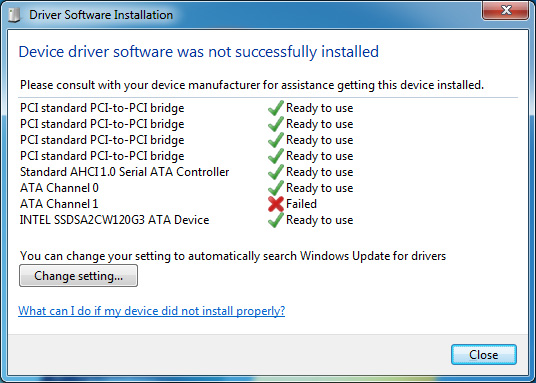
Only one of the two internal SATA channels was detected, meaning only one of the two internal drives was accessible. A reboot fixed this however.
The Elgato Thunderbolt SSD and Seagate's 2.5" GoFlex Thunderbolt adapter both use a different (lower power) SATA controller in order to stay below the 10W limit for a bus powered device (the cable, SATA and pre-Cactus Ridge Thunderbolt controllers combined already eat up around 5W).
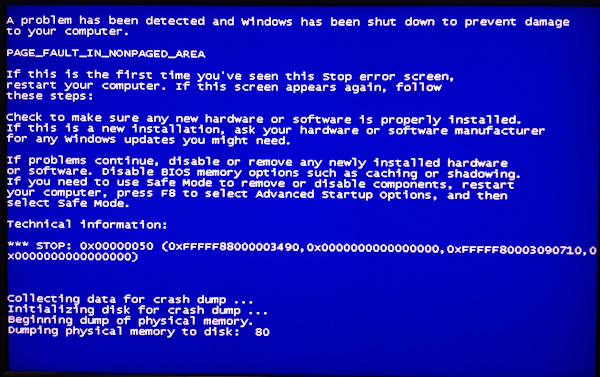
Unfortunately the ASMedia controller in these devices doesn't work well without a certified driver. Simply attaching the Elgato drive to a running Windows PC can cause a BSOD. Neither drive would even show up on either of the motherboards I tested; we'll simply have to wait for a certified driver here.
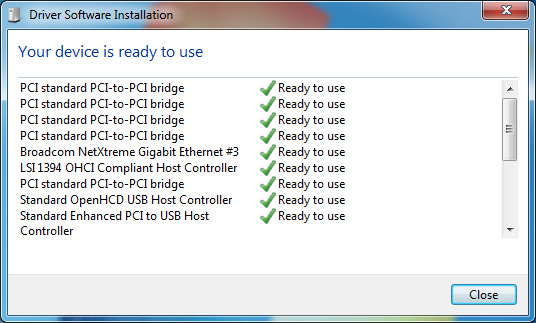
Apple's Thunderbolt Display works but not without a bunch of caveats. First you'll need access to a Mac to extract the drivers for the integrated components in the display (Firewire 800, GigE, etc.). Audio will work but only if you don't have a discrete GPU plugged into the motherboard. Firewire 800 and GigE both work. The integrated USB hub on the other hand basically doesn't work under Windows. Apple doesn't officially support the Thunderbolt Display under Windows and Intel won't certify it without Apple's support so anyone wanting to use a Thunderbolt display will just have to wait for someone else to release a similar product.
Remember the weird audio frame dropping issue I encountered under OS X with the Pegasus and Thunderbolt Display? I also encounter a similar but less severe version of that under Windows. While writing to the Pegasus and playing music through the Thunderbolt Display's speakers I get dropped audio frames, but unlike under OS X the music continues to play and is mostly recognizable—it just sounds like there's a little bit of static in the background. It's interesting that the problem exists under both OSes, but with slightly different behavior.


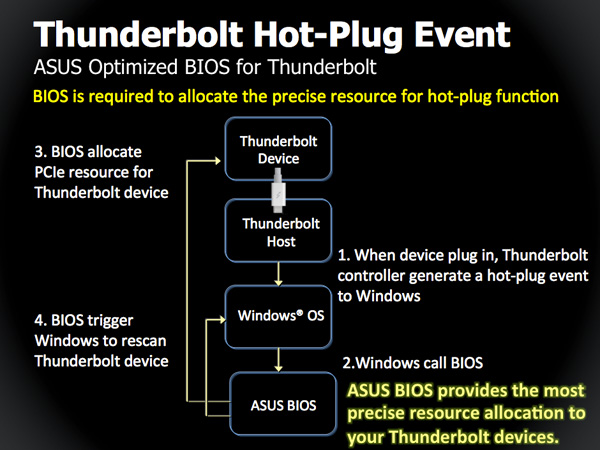
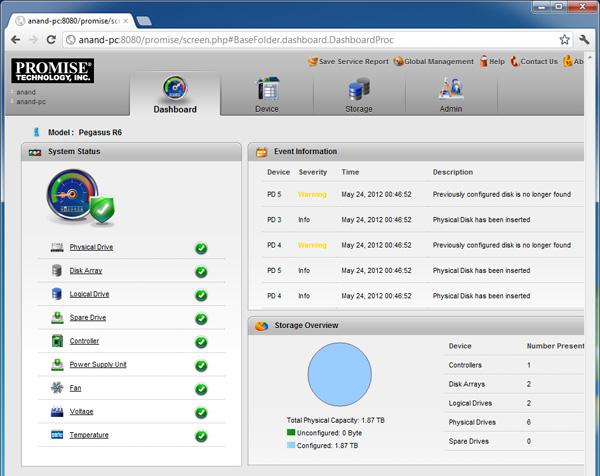














116 Comments
View All Comments
Jaybus - Monday, June 4, 2012 - link
It was initially designed for use with an optical PHY. Intel's Silicon Photonics lab simply hasn't yet got all of the pieces together. The goal is to have all of the optical components, laser, detector, lenses, and waveguides, on chip. TB is the result of replacing the optical PHY, which is not yet ready, with an electrical PHY. If Intel ever manages the on-chip optics, then it will drastically increase bandwidth while lowering power requirements and heat. Replace TB's electrical PHY with Intel's original intent, and it will drastically outperform USB, or any other electrical interface, without using more power. Also, the on-chip optics would make the optical interface much cheaper to manufacture and the optical cable should be cheaper too, since it wouldn't require the active circuitry.rahvin - Monday, June 4, 2012 - link
You're still going to have an electrical circuit and copper in TB when it goes optical. Otherwise you lose the 10W of bus power it provides. Intel has been very clear that it when it goes optical it is still going to be providing the 10W bus power the spec calls for meaning the copper and electrical will still be there.Jaybus - Wednesday, June 6, 2012 - link
Yes, but just for DC power through the cable. The TB chip doesn't source or regulate the power. The power dissipation for TB chips, electronic or optical, does not include the peripheral power supply, which is the same either way, and also the same for USB 3.derektrotter - Monday, June 4, 2012 - link
I'm with you.I can buy a USB 3.0 SATA dock for much less than the price of a TB cable. And I've been able to do so for a year. And people think somehow the cables will become cheap, but given that there are two CPUs in each one, I don't find that likely.
TB may be better, but USB 3.0 is going to cream it. Really it already has.
It's kinda too bad, I'd love to have one of those TB displays to go with my MacBook Air, but given it won't work with any other device in my house (including my other Mac), that's not going to happen.
Also, that display really should have a USB 3.0 hub in it, not a 2.0 one.
KoolAidMan1 - Sunday, June 3, 2012 - link
Empty Firewire ports are the fault of ignorant users. To this day it is so much better than USB 2.0. If users ignore TB once the technical kinks are hashed out and prices have stabilized, well, I don't know what to sayvectorm12 - Sunday, June 3, 2012 - link
Honestly I was gonna reply about this particular post but once I had finished writing the reply I realized you're either a troll of just incredibly ignorant of other usage-scenarios than your own.In any case I'm not going to dignify that with a detailed reply.
ananduser - Monday, June 4, 2012 - link
"Empty Firewire ports are the fault of ignorant users." What a stupid generalizing statement.Thefinaleofseem - Sunday, June 3, 2012 - link
There never was a 1 year exclusivity arrangement. Sony implemented TB on a laptop last summer. Manufacturers largely weren't interested until it came built into the chipset.repoman27 - Sunday, June 3, 2012 - link
Sony implemented a proprietary interface based on Intel's Light Peak technology. They never called it Thunderbolt because it wasn't. And it still is not built into any chipset. But thanks for playing.Why does every post about Thunderbolt invite a mega troll-a-thon?
ananduser - Monday, June 4, 2012 - link
Why does every TB related post invite Apple users willing to defend the adoption scenarios of the interface. I am skeptical and at the same time honest about TB. I believe that it won't take off and will remain a niche. It is not me who is mega-trolling, but rather some of the macusers commenting here. They feel that it's their duty to defend TB since it was Apple pushed and not because of the technical merits(which I don't dispute).